How GM Ensures the 2023 Cadillac Lyriq is Ready for Winter

Indianapolis. Nürburgring. Kapuskasing?
General Motors’ northern Canadian testing facility doesn’t quite have the globe-spanning clout of other automotive destinations. But for those in the know, it’s a big deal: a 272-acre playground where almost every production model is put through a battery of brutal tests before it gets the stamp of approval.
The folks who work here are understandably protective. Auto writers rarely venture inside the gates, and the premises is teeming with motion-sensing cameras with facial recognition—along with camouflaged prototypes. At nearly nine hours north of Toronto, Kapuskasing isn’t exactly quick hop and a jump away for prying eyes, either. Lured by the promise of driving the 2023 Cadillac Lyriq in precisely the conditions EVs tend to struggle with, I recently spent a day at the GM Cold Weather Development Centre. I learned not only how Cadillac’s EV functions in truly frigid temperatures (-25 degrees Celsius / -13 degrees Fahrenheit), but how GM is preparing for the electrified future.
A bit of history
But first, a quick history lesson. The General’s been testing up in the town of Kapuskasing since 1941. As that date suggests, the original base had a military focus. The place would get its official title of GM Cold Weather Development Centre on February 14, 1973—we showed up just a few weeks after the 50th anniversary. At the time, it was just 23 acres.
The facility houses numerous buildings, a 3.6-kilometer (2.24-mile) test track, over two dozen cold cells, and 27 charging stations. The latter consists of Levels 2 and 3, including experimental 400-kW units from ChargePoint that aren’t even scheduled to be accessible to the public for a few more years.
SEE ALSO: 2022 Cadillac CT5-V Blackwing Hands-On Road TestMaking cold colder
Josh Walton, project lead at Kapuskasing, is understandably proud of those high-power charging units. He explains that the team is able to closely observe the entire charging process, looking for ways to optimize it. The partnership with ChargePoint makes for a bi-directional exchange of information, too: GM’s testing can answer lingering charging questions, especially in such extreme environments.
How extreme are we talking? The afore-mentioned cold cells can drop the mercury down to an indicated -45 degrees C (-49 degrees F). Walton invites us into one. With zero humidity, it’s hard to register the cold.
And then you breathe in. The super-chilled air hurts your lungs, and turns every nose hair into a stabby little icicle. GM sticks cars in here to see how the extreme cold affects materials. In the winter, the vehicles sit for hours before an engineer cold-starts them; in the summer, the cold cells allow for extreme temperature cycling. On average, new vehicles go through an accelerated life cycle: around two years of use in a matter of 12 weeks, and in an extreme environment to boot.
Are there special allowances for EVs? Nope. Walton tells us that every car sees the same rigorous process, from a Trax to a ‘Vette to the GMC Hummer we see parked up by the chargers.
SEE ALSO: Chevrolet Corvette vs Porsche 718 Boxster vs Toyota Supra: Sports Car Shootout2023 Cadillac Lyriq sails through tests
Our small squadron of 2023 Cadillac Lyriqs takes part in three Kapuskasing tests. The first is GM’s “squeaks and rattles” building. This two-way tunnel features a variety of uneven surfaces, including speedbumps, offset bumps, and a Euro-cobblestone facsimile. Engineers can take cars through here up to 20 times in a single hour, gradually increasing speed. As Walton tells it, this building will quickly reveal rattles, buzzes, squeaks, and any other unwanted noises. From behind the wheel of the Lyriq, it’s all smooth sailing.
Next up is a procession lap around the test track itself. It’s covered in snow right now, because of course it is. Here too, the Lyriq impresses with sure-footedness.
We skip across the street to a decommissioned airstrip, also part of the facility. Here we get a run down the strip with an instructor riding shotgun. As we approach the box of cones ahead, he’ll yell “left” or “right,” and we’ll need to make an emergency maneuver. I clip a cone the first attempt—psyched myself out, you see—but get it my next run. The Lyriq is unflappable.
SEE ALSO: Jeep Grand Wagoneer vs Cadillac Escalade Comparison2023 Cadillac Lyriq first impressions: strong
The day wraps with an all-too-brief road drive, again in a lead-follow format. Exciting roads these are not, but the easy-going route allows me to better appreciate the cabin. The Lyriq is a longer car than most other luxury EVs out there; at 196.7 inches (4,996 millimeters) long, it’s fractionally longer than the BMW iX, but so comparatively low-slung. Tall folks should still find it plenty comfortable in either row, however, with a large glass roof providing lots of natural light.
The interior is a big step forward for the brand, blending the techy modernity of the Escalade with an altogether more spacious, elegant design. The curved display is super-sharp and resists all the snow-assisted glare, with a new operating system that’s slick and simple to learn. A focus on tactility is a welcome one: the knurled metal of the central rotary dial and air vents feels great to use, and the laser-etched wood in the door panels is a classy touch. It isn’t all for show, either. The “floating” center console makes for a ton of storage space between the front footwells. The seats are comfortable and—crucially here in Kap—very quick to heat up.
We’re driving the 2023 Cadillac Lyriq model, as it’s just before the 2024 lineup details drop. It’s the rear-drive model as well, which pairs a 102-kWh battery pack with a single electric motor for 340 horsepower and 325 pound-feet of torque. Like any modern EV, it’s quick off the line and maintains the shove well into highway speeds. Range is quoted at 502 kilometers (312 miles).
What’s really interesting is the gap between the RWD and AWD Lyriqs. Or rather, the lack of one. For just a little over $3,000 (on either side of the border), opting for the AWD model bumps power up to a full 500 hp, with 450 lb-ft. Range drops just 8 km (5 mi). I ask why anybody would forego the AWD model when the range penalty is so small—and, essentially, the Cadillac team says the same thing. A spokesperson does acknowledge that the gap may grow for the MY2024 lineup, as these are preliminary figures.
Charging is capped at a rate of 190 kW, even though the Lyriq uses the Ultium platform shared with the 350-kW-chargeable GMC Hummer. This is due to the Lyriq running a 400-volt version of the platform. Cadillac offered two Level 2 options for the 2023 model: up to 11.5 kW for the AWD, and 19.2 kW for the RWD model. For 2024, the 19.2 kW charger becomes on option on both.
The advantages of Cadillac shaping its cars up here in Kap become more clear the longer we drive. The Lyriq is sure-footed and very quiet, even on winter rubber. A heat-pump also ensures this level of efficiency. Its displayed efficiency figures aren’t far off what I’d expect in ideal temperatures, either: at a hair over 20.0 kWh/100 km (3.1 miles / kWh), there’s no reason to think the EV Caddy can’t exceed its targets in warmer climates.
The 2023 Cadillac Lyriq is priced very aggressively. The 2023 model started at a hair under $70,000 CAD; in the US, the ’24 will kick off at $58,590. That’s a very solid deal for something with such a large battery pack, long range, and impressively well-built interior. I can’t wait to get more seat time.
Getting a taste of the Lyriq here in Kapuskasing is about as ideal a situation as could be. The thoroughness of the cold-weather testing should put the EV-skeptical at ease—and this battery of tests is what GM does for every one of its North American models. With those concept car looks, super-competitive pricing, classy interior—and the Kapuskasing pedigree—the Lyriq should worry the rest of the luxury EV scene.
Become an AutoGuide insider. Get the latest from the automotive world first by subscribing to our newsletter here.

Kyle began his automotive obsession before he even started school, courtesy of a remote control Porsche and various LEGO sets. He later studied advertising and graphic design at Humber College, which led him to writing about cars (both real and digital). He is now a proud member of the Automobile Journalists Association of Canada (AJAC), where he was the Journalist of the Year runner-up for 2021.
More by Kyle Patrick



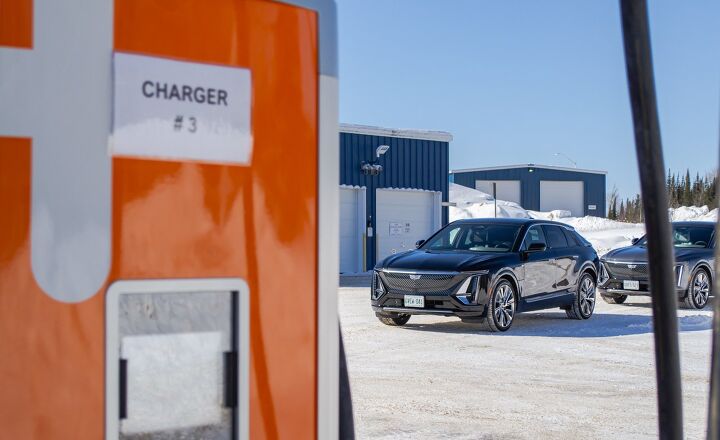





















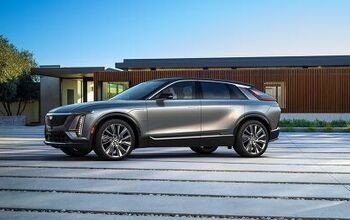

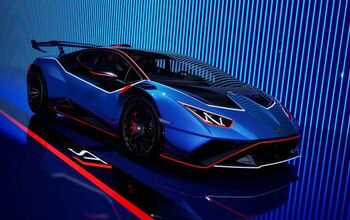


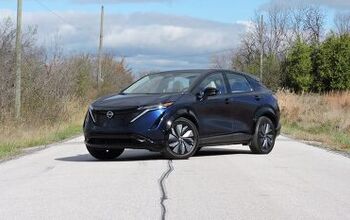






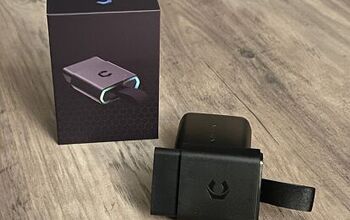
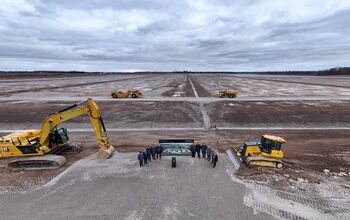
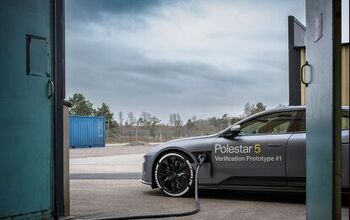
Comments
Join the conversation
when will we start seeing these be available?